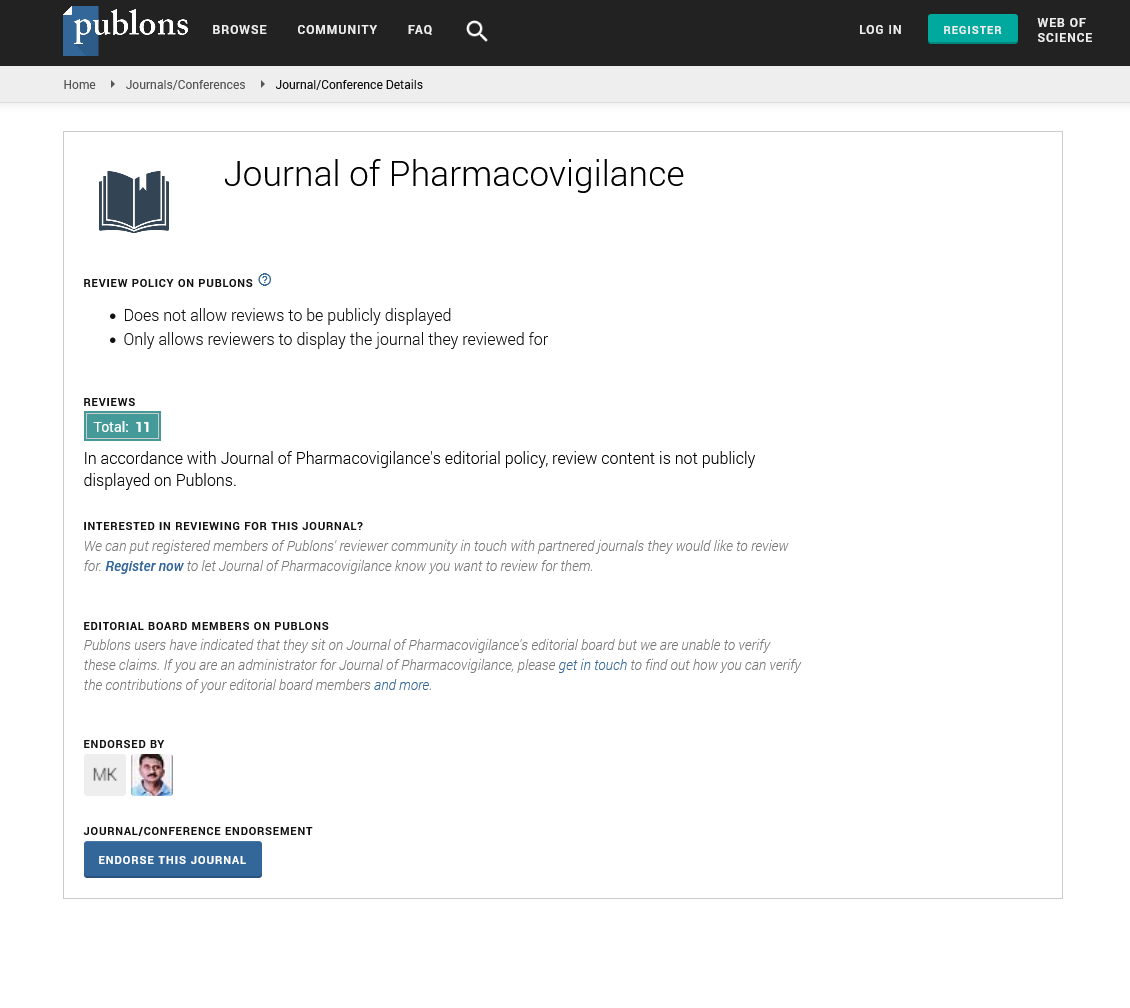Indexed In
- Open J Gate
- JournalTOCs
- The Global Impact Factor (GIF)
- RefSeek
- Hamdard University
- EBSCO A-Z
- OCLC- WorldCat
- Publons
- Euro Pub
- Google Scholar
Useful Links
Share This Page
Journal Flyer

Open Access Journals
- Agri and Aquaculture
- Biochemistry
- Bioinformatics & Systems Biology
- Business & Management
- Chemistry
- Clinical Sciences
- Engineering
- Food & Nutrition
- General Science
- Genetics & Molecular Biology
- Immunology & Microbiology
- Medical Sciences
- Neuroscience & Psychology
- Nursing & Health Care
- Pharmaceutical Sciences
Commentary - (2022) Volume 10, Issue 5
Drug Related Problems in the Elderly Living in the Community
Kathleen Stecula*Received: 15-Apr-2022, Manuscript No. JP-22-16993; Editor assigned: 18-Apr-2022, Pre QC No. JP-22-16993(PQ); Reviewed: 02-May-2022, QC No. JP-22-16993; Revised: 09-May-2022, Manuscript No. JP-22-16993(R); Published: 16-May-2022, DOI: 10.35248/2329-6887.22.10.373
Description
Side effects of the drug can occur in any patient, but certain characteristics of the elderly make the patient more sensitive. For example, older people often take multiple medications, and there are age-related changes in pharmacodynamics and pharmacokinetics. Both increase the risk of side effects. New allergic reactions are not predictable or avoidable. However, it is believed that side effects can be prevented in at least 25% of elderly cases. Certain classes of medicines are commonly involved, including antipsychotics, warfarins, antiplatelet drugs, hypoglycaemic agents, insulin, antidepressants, and sedative hypnotics.
In the elderly, some common causes of side effects, ineffectiveness, or both are preventable. The main cause is lack of communication with patients or between healthcare providers especially during the transition to healthcare. Further attention to dosing matching during admission and discharge or other transitions of care will prevent many drug-related problems.
Older people are at increased risk of drug-related problems due to age-related physiological changes, the presence of multiple chronic and chronic disorders, and the type and number of prescription and non-prescription drugs. Pharmaceutical-related issues are receiving international attention. Up to 200,000 people die each year from drug-related problems in the United States. Studies in other developed countries where patients have access to medicines have shown that various types of drug-related problems occur among the elderly in the medical setting, from nursing homes to community life.
Various initiatives have been developed to reduce the potential for drug-related problems in the elderly. There is growing awareness of the role pharmacists can play in identifying and preventing adverse health effects and the cost of dosing-related problems. In fact, many studies have documented the positive impact that pharmacists may have on this area, and studies are underway. With the increase in the elderly and the number and variety of drugs available, it is possible to develop further initiatives to raise awareness of drug-related issues and maximize the positive outcomes of drug therapy in the elderly.
A Drug-Related Problem (DRP) is an event or situation associated with drug therapy that, in fact or potentially, interferes with the desired health outcome. When they suffer from older people after discharge, they present a complex situation-perhaps a common situation. In 2004, the world health organization launched the World Alliance for Patient Safety (WAPS). One of its initiatives is to ensure the accuracy of dosing during the transition of treatment through dosing adjustment.
The World Health Organization (WHO) estimates that more than 50% of all medicines are improperly prescribed, dispensed, or sold, and more than half of patients are not taking them properly. Hospitalization and visits to the emergency room. In addition, drug adverse events account for over 3.7% of all hospitalizations. Non-compliance and monitoring issues account for 31% and 22% of avoidable drug-related hospitalizations, respectively.
Older people take multiple drugs differently than younger adults, are more likely to metabolize the drug, and may exacerbate DRP and drug-related hospitalizations. However, these patients account for 15-30% of all drug-related hospitalizations.
For DRP-related health concerns in elderly patients at home, identifying and preventing DRP and risk factors for DRP is essential to finding effective strategies for improving DRP-related outcomes. Therefore, the purpose of this study was to investigate the frequency and type of DRP and the risk factors associated with DRP in the elderly living at home.
Citation: Stecula K (2022) Drug Related Problems in the Elderly Living in the Community. J Pharmacovigil. 10:373.
Copyright: © 2022 Stecula K. This is an open-access article distributed under the terms of the Creative Commons Attribution License, which permits unrestricted use, distribution, and reproduction in any medium, provided the original author and source are credited.

